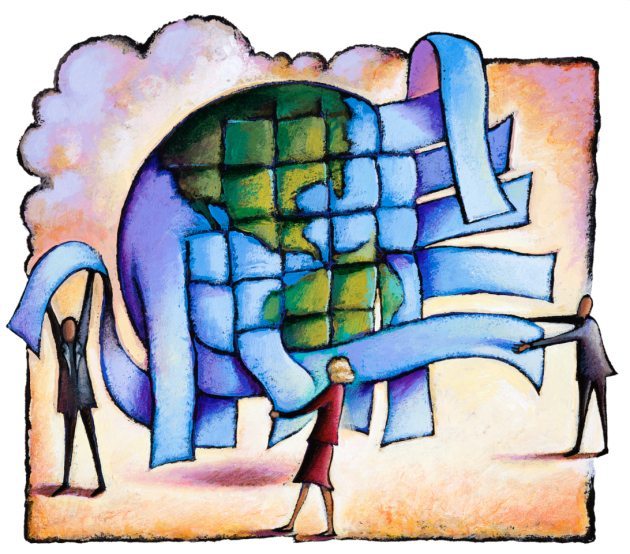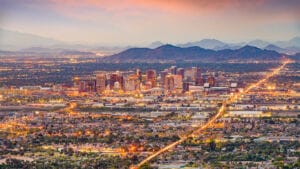Arizona’s economic recovery will continue to move at a glacial speed in 2011 — but at least it’s moving. The coming new year will see an increase in job creation, a rise in population and even a modest increase in single-family home permits. However, the consensus among economists at today’s 47th Annual Economic Forecast Luncheon, co-sponsored by the Department of Economics at Arizona State University’s W. P. Carey School of Business and JPMorgan Chase, is that Arizona’s recovery will continue to be far less robust than economic rebounds of the past.
“Arizona was much harder hit in this recession than the rest of the country,” said Lee McPheters, director of the JPMorgan Chase Economic Outlook Center at the W.P. Carey School of Business in an interview before the luncheon. “Overall the U.S. lost about 6 percent of jobs, while Arizona lost 11 percent of jobs and the Greater Phoenix area lost 12 percent of jobs. So, by that measure, Arizona’s problems were twice as large as the average state.”
According to McPheters, hampering Arizona’s growth in 2010 has been:
- Consumers’ focusing on paying off debt rather than spending
- Corporate profits improving but hiring deferred
- The expected resurgence in single-family housing did not develop
- Home prices have not yet stabilized
- Small businesses facing tight credit conditions and weak demand
- Stimulus programs ending
Job Growth
In terms of job creation, Arizona employment is expected to increase by 47,800 jobs in 2011, following three straight years of losses. The projected rate of growth for 2011 is 2 percent. That’s about double the rate of employment growth anticipated for the nation as a whole, but well below the state’s long-term average of 3.7 percent.
In addition, the state’s unemployment rate will remain above the 9 percent mark throughout 2011.
Still, even with Arizona being at ground zero of the burst housing bubble that dragged the rest of the nation into recession, the employment situation in the state has shown a marked improvement.
“For all of 2009, at the deepest point of the recession, only Nevada had weaker labor market conditions, and Arizona ranked 49th among the states in job growth (or losses),” McPheters said. “But in just the past couple of months, Arizona’s overall position is improving. The state ranked 12th based on October job creation in the 50 states. And in September, Phoenix added 27,400 jobs compared to the year before. Phoenix is the now the second-fastest growing metro area.”
Real Estate
The real estate and housing markets in Arizona remain weak in 2010, with single-family housing permits expected to be down 5 percent, marking a fifth consecutive year of declines. Single-family housing permits are expected to finally improve next year, with an anticipated increase of 25 percent. However, that increase stems from a base of 12,000 units in 2010, totaling just an additional 3,000 units. Compare that paltry number to the 80,000 annual permits handed out at the peak of the housing boom.
“Last year at this time, there was optimism about Arizona housing, but the growth never came,” McPheters said. “It looks like 2010 single-family building won’t even reach the level of 2009, which was the worst year of the recession. So most analysts are cautious right now about housing.”
One of those cautious analysts is Elliott Pollack, CEO of Elliott D. Pollack & Company in Scottsdale.
“The good news is that the worst is over, but it’s going to be a painfully slow recovery,” Pollack said in an interview before the forecast luncheon.
Pollack lists the following as reasons why the state’s housing market is showing only the slightest signs of improvement:
- Tougher underwriting standards on mortgages
- Up to 51 percent of the homes in Arizona have negative equity
- Previous loan modifications have mostly failed
- Foreclosures remain high
- Option ARM resets do not peak until next year




